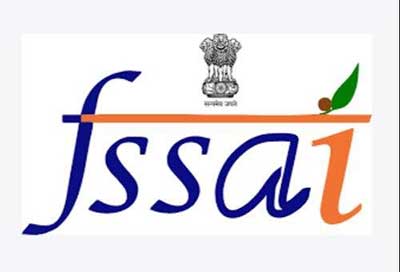Relevance: GS-2: Statutory, regulatory and quasi-judicial bodies
Key Phrases: Food Safety Standards Authority of India (FSSAI), “health star rating” system, “warning labels”, front of package labelling (FOPL), IIM Ahmedabad
Why in News?
- Recently, the Food Safety Standards Authority of India (FSSAI) has planned to adopt the “health star rating” system in order to help consumers reduce their intake of unhealthy foods.
- Many global experts questioned the ‘star rating’ of food products, which is likely to be recommended by FSSAI for packaged food.
- They criticised the IIM-A study on the basis of which FSSAI took the decision of the star rating system.
- They argued that “warning labels” instead have been most effective in various countries
About FSSAI:
- Food Safety and Standards Authority of India (FSSAI) is a statutory body established under the Food Safety and Standards Act, 2006 (FSS Act).
- FSSAI is an autonomous body. The administrative ministry for FSSAI is the Ministry of Health & Family Welfare.
- FSSAI is responsible for protecting and promoting public health through the regulation and supervision of food safety.
- FSSAI headquarters: New Delhi.
- Functions:
- Granting FSSAI food safety license and certification for food businesses.
- Creating an information network across the country about food safety.
- Promote general awareness about food safety and food standards.
- Framing of regulations to lay down the standards and guidelines of food safety.
- Laying down procedure and guidelines for laboratories in food businesses.
- To provide suggestions to the government in framing the policies.
- To collect data regarding contaminants in foods products, identification of emerging risks and introduction of rapid alert systems.
Key Points:
- The FSSAI has decided to adopt the “health-star rating system”, which gives a product 1/2 a star to 5 stars for front of package labelling (FOPL).
- The decision was based on the recommendations of a study by the IIM
Ahmedabad the regulator had commissioned in September 2021.
- The FSSAI decided that FOPL implementation could be made voluntary for a period of four years.
- Experts Arguments:
- They have said the health star rating (HSR) system adopted in countries like Australia and New Zealand has not resulted in any meaningful behaviour change and that eight years after their implementation there is “ still no evidence of HSRs having a significant impact on the nutritional quality of people’s food and beverage purchases.
- For instance, a systematic review carried out in 2019 that evaluated HSR labels through three randomised controlled trials found that they didn’t impact food purchases, such as calories or sugar or sodium purchased.
- Global Experts of Food items including Barry M Popkin, University of North Carolina; Mike Rayner from the University of Oxford; and Frank Hu from Harvard TH Chan School of Public Health, among others have given arguments against the FSSAI ratings system.
- ‘Misrepresents nutrition science’:
- The nutrition researchers and academics argue that the HSR system “misrepresents nutrition science”.
- They explained that the underlying premise of the HSR is that positive ingredients such as fruits and nuts can offset negative nutrients such as calories, saturated fat, total sugar, sodium to calculate the number of stars ascribed to a product.
- This algorithm of adding and subtracting nutrients does not fit with our understanding of biology. For example, the presence of fruit in a fruit drink juice does not offset the impacts of added sugar in the body.
- HSR system can lead to the phenomenon of “health halo”:
- Star ratings based on 'health halo' can confuse consumers as stars can be interpreted as an endorsement of a products.
- Warning labels most effective:
- Experts have called for front-of-package warning labels such as black octagonal warnings that indicate when food and drink products are high in sodium, sugar, salt and fats.
- This is the most effective model to date in informing consumers of the nutritional quality of packaged products.
- Such endorsement is based on evidence from countries such as Canada, Israel, Chile, Perú, Brazil, Argentina and Mexico that have made FOP warning labels mandatory.
- Case study of Chile in 2016:
- Warning Labels have contributed to shifts in social norms and buyer behaviour in purchasing healthier foods and drinks.
- They have reduced consumption of sugar sweetened beverages leading to reformulations of food and beverages in removing sodium and sugar.
Conclusion:
- Since, many experts have raised questions over the IIM-Ahmedabad study and called its conclusions “completely wrong from a scientific perspective” and suspects “underlying bias Is a preference for the HSR”, which led to shifting outcomes to achieve favourable results.
- Thus, the Government can go for new data collection and study to reduce doubts on the HSR model before implementing it on pan India scale. .
- Government can also explore warnings label models on a small scale for better comparison between HSR model and warning labels model.
Source: The Hindu BL
Mains Question:
Q. What do you mean by the Health Star Rating (HSR) system ? Critically examine the impact of the HSR system on reducing the intake of unhealthy diet and strengthening the consumer awareness in India. (15 marks).









